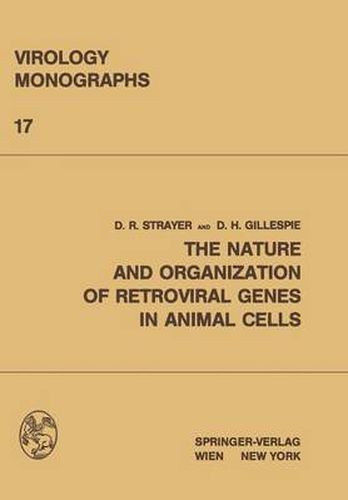Readings Newsletter
Become a Readings Member to make your shopping experience even easier.
Sign in or sign up for free!
You’re not far away from qualifying for FREE standard shipping within Australia
You’ve qualified for FREE standard shipping within Australia
The cart is loading…






This title is printed to order. This book may have been self-published. If so, we cannot guarantee the quality of the content. In the main most books will have gone through the editing process however some may not. We therefore suggest that you be aware of this before ordering this book. If in doubt check either the author or publisher’s details as we are unable to accept any returns unless they are faulty. Please contact us if you have any questions.
l RNA tumor viruses have become increasingly utilized in studies of cellular transformation and gene regulation. The genes of retroviruses exist in two forms; as extrachromosomal, RNA-containing, infectious particles and as DNA pro 2 viruses stably associated with cell genes. Components from the extracellular form can be collected in large quantity and purified for the preparation of molec ular probes. These probes can be used to dissect the sequence of events required for the establishment and expression of the integrated form. Furthermore the 2 genomes of retroviruses originated from normal cell genes, genes called virogenes * The nucleic acid and protein probes isolated from these viruses are therefore useful for studying the nature and expression of this normal cell gene and in elucidating the physiological role of its products. RNA tumor viruses perhaps offer us one of the most complete sets of biochemical reagents and biological responses for examining gene regulation in vertebrates and for studying the consequences of aberrant gene regulation on cell growth in tissue culture and in animals. Further more, there is an increasing conviction that virogenes play an important role in normal development and/or differentiation (RISSER, STOCKERT and OLD, 1978). Consequently, there is a growing feeling that DNA proviruses are altered viro genes and are capable of interfering with normal development or differentiation, causing reprogrammed growth or the incapacity to specialize.
$9.00 standard shipping within Australia
FREE standard shipping within Australia for orders over $100.00
Express & International shipping calculated at checkout
This title is printed to order. This book may have been self-published. If so, we cannot guarantee the quality of the content. In the main most books will have gone through the editing process however some may not. We therefore suggest that you be aware of this before ordering this book. If in doubt check either the author or publisher’s details as we are unable to accept any returns unless they are faulty. Please contact us if you have any questions.
l RNA tumor viruses have become increasingly utilized in studies of cellular transformation and gene regulation. The genes of retroviruses exist in two forms; as extrachromosomal, RNA-containing, infectious particles and as DNA pro 2 viruses stably associated with cell genes. Components from the extracellular form can be collected in large quantity and purified for the preparation of molec ular probes. These probes can be used to dissect the sequence of events required for the establishment and expression of the integrated form. Furthermore the 2 genomes of retroviruses originated from normal cell genes, genes called virogenes * The nucleic acid and protein probes isolated from these viruses are therefore useful for studying the nature and expression of this normal cell gene and in elucidating the physiological role of its products. RNA tumor viruses perhaps offer us one of the most complete sets of biochemical reagents and biological responses for examining gene regulation in vertebrates and for studying the consequences of aberrant gene regulation on cell growth in tissue culture and in animals. Further more, there is an increasing conviction that virogenes play an important role in normal development and/or differentiation (RISSER, STOCKERT and OLD, 1978). Consequently, there is a growing feeling that DNA proviruses are altered viro genes and are capable of interfering with normal development or differentiation, causing reprogrammed growth or the incapacity to specialize.